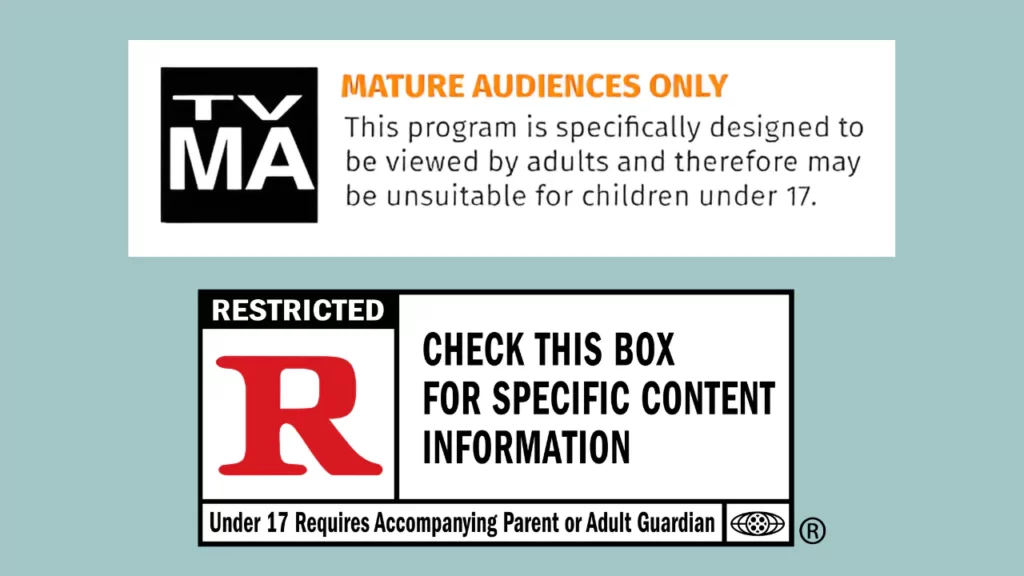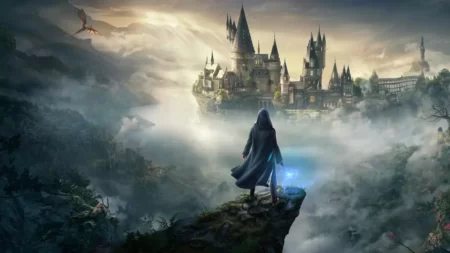You might think that TV series, web series, or films are released with a rating. The most common ratings are TV-MA, R, 18+, TV-MA OK, TV-14, etc. These acronyms depict the type of content you are about to view, and these tags are meant to ensure whether the content is kid-friendly or meant only for adults or a family show.
If you are confused about TV-MA and R rating, then let’s get to the details of the similarities and differences of these two rating systems. In this guide, you will get a suitable explanation.
R Rating Overview
R rating indicates Motion Picture Association (MPA). These are the people who determine G, PG, PG-13, R, or NC-17 in the cinematic universe. R rating indicates “Restricted” and it is advised that parents should think before they allow their kids to watch the film if they are below 17 years old. Also, R indicates that this movie should be watched only under adult supervision. Every movie that contains an R rating has intense scenes that can be associated with violence, explicit sex scenes, use of slang, or drug abuse.
TV-MA Rating Overview
TV-MA stands for Mature Audience only. It indicates that the movies rated with TV-MA are highly sensitive and not suitable for children under 17. Based on the TV parental guidance, the sensitivity of the scenes is quite high as it can contain nudity, explicit violence, and extreme slang language.
What type of content can you expect in TV-MA and R rating?
Both TV-MA and R rating seem to be kind of similar and have parental restrictions and the content criteria also overlaps. However, there is a difference in the category and the primary difference is how the content is being presented. Usually, movies that have adult material have limited time frames on the other hand TV shows can roll out these explicit scenes over multiple episodes and seasons.
For both TV-MA and R-rated content violence is unrestricted and they also seem to be too realistic and intense. Despite the use of slang language in both the ratings, the difference in movies is that it gets a one-time pass, whereas TV shows can drop the language throughout multiple episodes.
In both the categories of films, you can see nudity and explicit sex content. But, again in the case of TV-MA when compared to R, they try to explore in more depth and it can get seriously explicit with time.
Both the contents are meant for adult audiences, specifically the ones above 17 years old. However, based on the location and demographic nature, the comfort of watching these scenes is quite subjective.
For example: “Pulse Fiction” by Quentin Tarantino is R-rated and contains graphic violence, intense use of language, drug abuse, etc. On the other hand, “Breaking Bad” has a TV-MA rating where you get a similar scene but for a longer period of time.
Where are TV-MA and R-rated content released mostly?
The R-rated films are released in theaters and are meant for a broader audience to make up for the production cost. On the other hand, TV-MA shows can be seen through streaming platforms and are targeted at adult niche audiences as this involves controversial content, but mostly they do not have financial pressure on them.
Are these ratings universal?
No, TV-MA and R ratings are not universal as different countries have different classifications. For example, in India, you can find the Central Board of Films Certification (CBFC), whereas in the UK, you can find the British Board of Classification (BBFC). Based on the culture, norms, regulations, type of audience, culture, etc., these ratings are determined.
Can these ratings – TV-MA and R affect the content creation?
No, these ratings are not meant to affect the content creation. It completely depends on the audience and how they perceive the content. These ratings are mere indications that a child below 17 years old is not eligible to watch the content.
Is TV-MA the same as 18+?
Yes, TV-MA and 18+ ratings are similar but not identical because 18 + ratings are particularly meant for intense scenes and the content is created for the audience who are above 18 years old whereas TV-MA applies that the content is for those who are 17 years and older.
Which rating is more severe than R?
NC-17 rating is more severe than the R rating and stands for “No One 17 and Under Admitted”, and strongly implies that the content is made for adults only.
Which is worse: R rating or TV-MA?
R rating indicates that the content is made for a mature audience as it contains crude language, violence, nudity, etc., but if we compare it with TV-MA, then TV-MA is worse as they appear for a longer time to portray the storylines.







